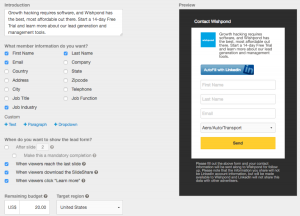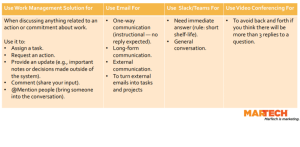How to get freelance hiring right
It’s about attracting the right people for your company and empowering them to do their best work.
BY Dan Crowder
Being business savvy isn’t about keeping every employee you hire. It’s about attracting the right people for your company and empowering them to do their best work. Even if those people are freelance workers.
In the creative sector I’m part of, it’s right to be less afraid of high turnover, and being more open to continuous movement is good for any organization that values creativity and ideas. The question is: How can we balance flexibility and consistency to foster strong relationships and deliver the best results?
Together with a sharp focus on attracting a strong permanent team, and a proactive hiring plan to keep a dynamic flow of talent through the company, freelance hires can be used to bolster your employees and business by keeping the right people in place.
The case for mixing freelance and permanent staff?
Using a balance of freelance and permanent staff is both a strategic approach—supplementing existing skill sets to flex and scale—and a responsible one that avoids overcommitting to people when, realistically, there might not be a permanent job to offer.
More than 1.5 billion freelancers are currently crafting their own paths globally, comprised largely of millennials and Gen Zers, many of whom have never heard of a graduate recruitment scheme and have no plans to enter the permanent workforce.
The global candidate pool today is a mix of people who want to work on contracts indefinitely, freelancers keeping an eye out for the right permanent opportunity, and others who believe that committing to long-term employment is right for them. Many companies see the benefit of having a diverse workforce spanning varied skill sets, priorities, and values, and actively offer opportunities to those at different stages of life.
In the design industry, there’s a lot of love for freelance. Companies see it as a resource tap to turn on and off quickly. It’s a way to “try before you buy” and make sure the new hire really adds to existing team strengths.?This works best with a proactive hiring plan.
Managing the balance
Although freelancing has come of age—not just in the design sector, where gigging culture is evolving to monthslong placements up to multiple-year contracts at both agencies and brands—certain misconceptions of freelancing prevail.
One such misconception is the idea that the grass is greener, and freelancing is more fun (essentially, that freelancers take on the hero projects without the operational stress and often command high day rates). Conversely, another is the notion that contractors pick up the less desirable work others would prefer to avoid, and without access to company benefits and perks.?
Businesses that choose to build in freelancers are making a decision that’s beneficial for employees.

It shows a willingness on leadership’s part to invest in resources to flex when needed, avoiding late-night working culture and the risk of employee burnout.
The likelihood is that workforces will become increasingly agile. One way to avoid any potential tension between permanent people and contractors is to bring in freelancers only to service a specific niche offer you don’t have in-house. In creative industries, this could be spatial designers, strategists, illustrators, or account people with sector-focused experience that demands a different approach. Communicating upcoming plans around additional talent resources where possible, and what that means for teams, will help smooth transitions and promote an open, flex-friendly culture.
A new vision of retention?
Metrics such as average length of service and the percentage of people staying past two years are still core KPIs at many companies. Given the investment in time and resources that goes into attracting and embedding people, you can see why leaders would want validation that they’ve let the right people in. But sustained success isn’t about keeping everyone.
As seen with our talent pools and clients in the U.S., where the job market is generally more dynamic and there are no notice periods even for director roles, perhaps we need to think less about retaining everyone and more about keeping the right people.
To get the strongest permanent workforce in place, regularly assess and review people, and avoid the very human tendency to overcommit, however hard that feels—especially at smaller agencies and companies that tend to lean into a culture of the team as family. A good question to ask every three months is “Would we hire this person again?” It sounds brutal, but not making decisions around poor performers can lead to high performers leaving.
A more strategic approach would be holding on to 90% of the workforce rather than 100%, focusing on top performers and a predesignated ratio of permanent staff to freelancers. It would help prevent the glass ceilings that stunt development and offer a structure that promotes flexibility, progress, and growth for people and the business.
ABOUT THE AUTHOR
Fast Company
(4)
Report Post







